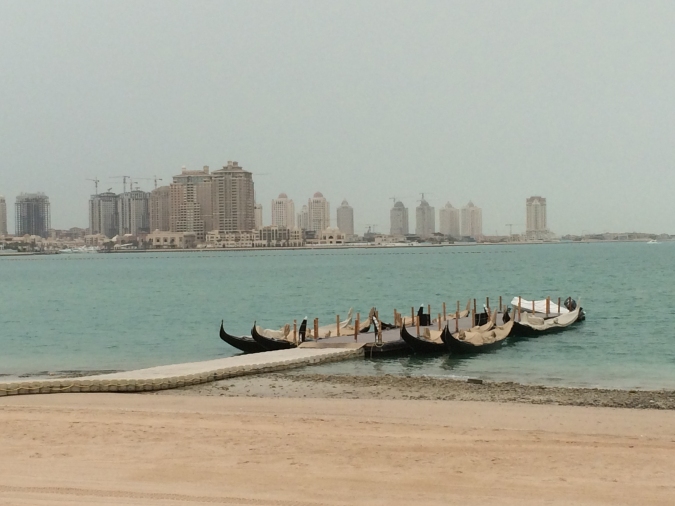
Qatar, is looking to invest its future through education. Courtesy of Luke Zaro
By Luke Zaro
QATAR— “It’s beyond amazing, but I don’t know where to begin.”
That’s usually what I end up writing to friends and family eager to hear about my study abroad experience in Qatar. While that answer does not explain much, in all fairness, even native Qataris would probably share in my difficulty in describing their homeland.
For years, Qatar, along with most of the other Gulf nations, was very sparsely populated, home to nomadic Arab Bedouins living in desert lands too harsh — and too infertile — for foreign powers to even consider conquering.
Pearl diving was the only profitable business, and the tiny Gulf States of Qatar, Kuwait, Bahrain and United Arab Emirates survived (and eventually achieved statehood) due to British protection. When the current Emir of Qatar was born in 1980, there were 224,000 people in the entire country — half the population of Wyoming.
While energy resources were slowly beginning to produce wealth, Qatar remained as it had for centuries — largely uninhabited with miles of sand in every direction.
Fast forward to today. Qatar has a $200 billion GDP, doubling in the last four years, and a tenfold increase since 2000. Qatar enjoys the world’s highest GDP per capita at $102,000, the only country even above $90,000.
Opulence permeates almost every facet of society. Downtown Doha looks like it came straight out of a futuristic science fiction movie with towering buildings like “The Torch” and “The Tornado” rising out of the desert sands overlooking the teal-colored sea. Taxes are virtually nonexistent. Water costs more than gasoline. Ferraris and Rolls Royces speed around the desert roads.
The dorms on my campus are the equivalent of five-star hotels: lobbies feature indoor waterfalls and marble floors and the rooms—almost all singles—come with a complimentary 3D TV and refrigerator, private bathroom and shower—all for less than a third of the price of Fordham’s housing rates.
So how did it happen?
Despite having the land area roughly the size of Connecticut’s, Qatar has the 12th largest oil reserve in the world, larger than the U.S. But, Qatar’s real wealth comes from natural gas reserves — third in the world behind only Russia and Iran, two much larger nations. In fact, despite being 850 times smaller than the U.S., Qatar finds itself with natural gas reserves three times those of the fifth-ranked U.S. At current production levels, Qatar has enough gas for more than the next 200 years.
The Qatari government is very much aware that its country’s wealth is thanks to its energy-rich natural reserves. Qatar currently has few current industries that it can fall back on when the reserves run dry — at least for now. The Qatari government has already taken many steps towards developing a long-term solution to this eventual problem, including the education program I am a part of this semester.
I am studying abroad at the Georgetown University School of Foreign Service in Qatar. Georgetown is one of six American colleges that collectively make up Education City. The complex is funded by the Qatar Foundation, a non-profit, government-funded organization run by Her Highness Sheikha Mozah bint Nasser Al Missned, the mother of the Emir of Qatar.
Qatar sees the writing on the wall and knows it must transform itself into being a country that relies on something other than oil and natural gas production. Using this energy-based boon in wealth, Qatar is spending heavily in projects that will secure it in the long term, like Education City, which brings Western universities and academically competitive students to study—and, for many, eventually work—in Qatar.
Its capital, Doha, is becoming a key center for air travel and investment, conveniently situated between European and Asian markets. By investing now, Qatar hopes to make Doha the world’s next international hub, a necessary stop for travelers, investors and academics, transforming Qatar into a first-world, information-based economy that can survive independent of its energy reserves.
How will a post-energy production Qatar look? Only time will tell, but the Qataris have at least 200 years to figure that out. For now, the rest of us can awe in the flourishing desert oasis.
